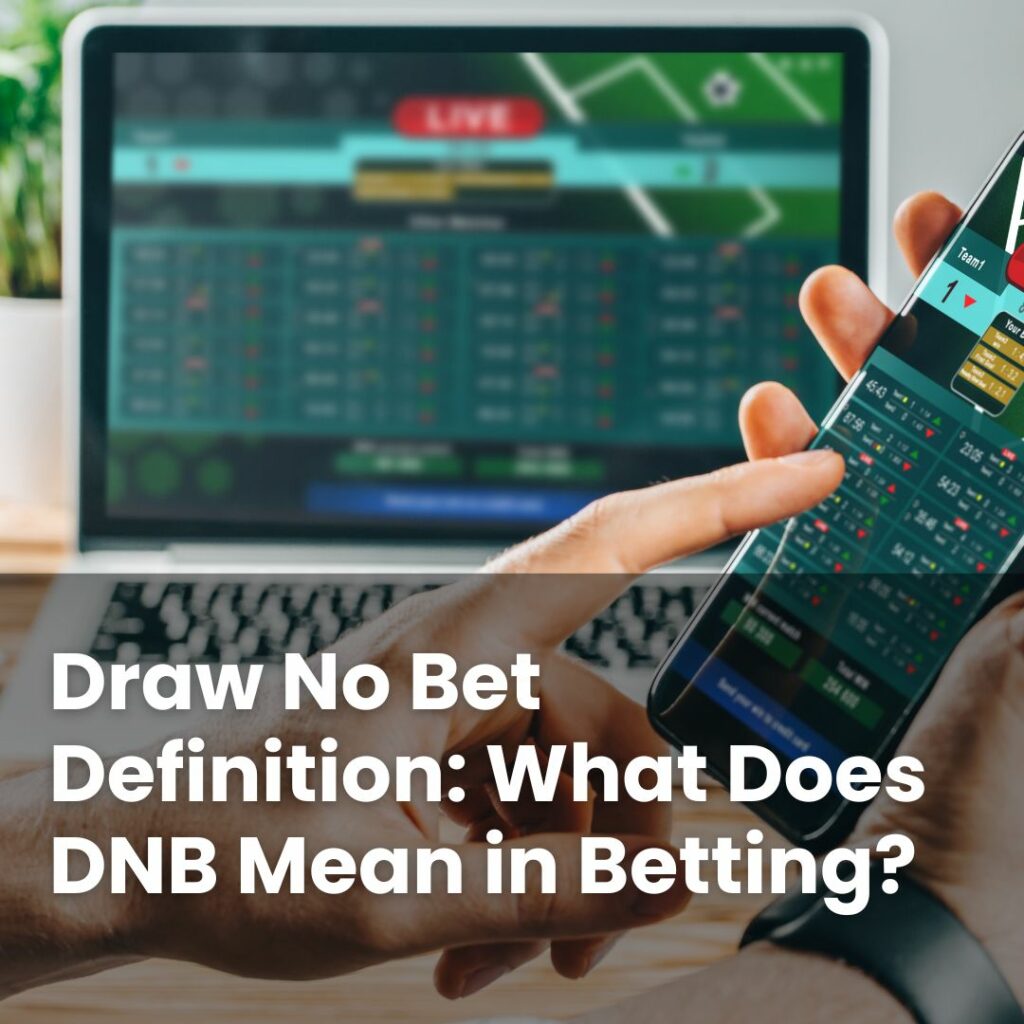Betting may sometimes seem complex, especially with so many markets to consider. One option frequently seen in football is Draw No Bet, often shown as DNB. Many people notice it listed alongside match odds and want to understand how it differs from the standard options.
This blog post explains the basics of Draw No Bet, how it functions in football, how the odds are formed, and how it may fit with different betting approaches. It also includes straightforward examples and shows how DNB can be part of accumulator bets.
Read on to find out more.
What Is Draw No Bet in Football Betting?
Draw No Bet is a football market where a bettor selects either the home team or the away team to win. If the match ends in a draw, the bettor’s stake is returned.
Unlike the regular match result market, which includes three outcomes (home win, draw, away win), Draw No Bet removes the draw from the equation. If the bettor’s chosen team wins, the bet is settled as a win. If the match ends level, the bettor’s original stake is refunded. If the bettor’s team loses, the stake is not returned. Because the draw is taken out as a losing outcome, the odds are usually lower than in the full-time result market.
So, how is a DNB bet settled on match day?
How Does Draw No Bet Work?
In a Draw No Bet market, there are only two possible outcomes: home win or away win. As mentioned earlier, if the team you select wins in regular time, the bet pays out. If the match finishes in a draw, your stake is returned. If your team loses, the stake is lost.
Settlement is based on the result after 90 minutes plus injury time. Extra time and penalties are not usually included in DNB markets unless otherwise stated in the rules for that specific event.
With this explained, it helps to look at how the odds are worked out.
See Our Top-Rated Online Casinos
Find the best online casino bonuses, read reviews from real players & discover brand new casinos with our list of recommended sites
How Are Draw No Bet Odds Calculated?
Bookmakers begin with the standard three-way market: home, draw, and away. The draw is removed from the calculation, and the remaining probability is redistributed between the two teams. A margin is then applied. This is why DNB odds are typically lower than those offered for the full-time result market.
Here’s a simple illustration. Imagine the actual probabilities before any margin are:
- Home win: 40%
- Draw: 30%
- Away win: 30%
Once the draw is taken out, the remaining 70% is reallocated between the home and away sides:
- Home DNB becomes 40 out of 70 = approximately 57.1%
- Away DNB becomes 30 out of 70 = approximately 42.9%
Converted into decimal odds (before applying any margin), this would be roughly 1.75 for Home DNB and 2.33 for Away DNB. Different bookmakers may use slightly different margins, which explains why prices may vary between operators.
Whether this type of market suits your approach depends on how you assess the fixture.
Is Draw No Bet a Good Option?
Draw No Bet may be considered in matches where teams appear evenly matched or where one team often avoids defeat but records a number of draws. Using DNB in these cases means that a level result does not result in a lost stake.
It may also be used in scenarios where a less-favoured team has shown consistent performances and could avoid defeat. Some bettors may choose DNB in these spots due to the possibility of a draw not ending the bet as a loss.
The main difference lies in the trade-off between lower odds and removing the draw as a losing outcome. Whether this suits your preferences will vary based on your approach and the way you manage your betting choices.
Examples of Draw No Bet Outcomes
Example 1:
A bettor selects Team A with Draw No Bet. There are three possible outcomes:
- Team A wins: the bet pays out at the given odds.
- The match is a draw: the original stake is refunded.
- Team A loses: the stake is lost.
Example 2:
A £10 bet is placed on Team B Draw No Bet at odds of 2/1:
- If Team B wins, the total return is £30 (£20 profit plus £10 stake).
- If the match ends in a draw, the £10 stake is refunded.
- If Team B loses, the stake is lost.
Can You Use Draw No Bet in Accumulators?
Yes. Draw No Bet selections are generally allowed in accumulator bets. As with any accumulator, all active selections must win for a return. If a DNB leg ends as a draw, it is usually settled as a void selection. The accumulator then continues with the remaining selections, and the overall odds are adjusted.
For example, a four-fold accumulator would become a treble if one leg is voided by a draw.
Terms may differ slightly between bookmakers, so it is important to check how void selections are handled before placing your accumulator. If you are including DNB selections for additional coverage, this setup allows the bet to continue even if one match finishes level.
Betting should always be approached in a balanced and mindful way. It’s a good idea to set personal limits on time and spend, take regular breaks, and view betting as one of many possible forms of entertainment. If it ever stops feeling enjoyable or begins to affect other areas of your life, support is available.
There are several independent organisations that offer confidential advice and assistance, including GamCare, Gambling Therapy, and BeGambleAware. They provide tools, information, and access to trained professionals who can help.



